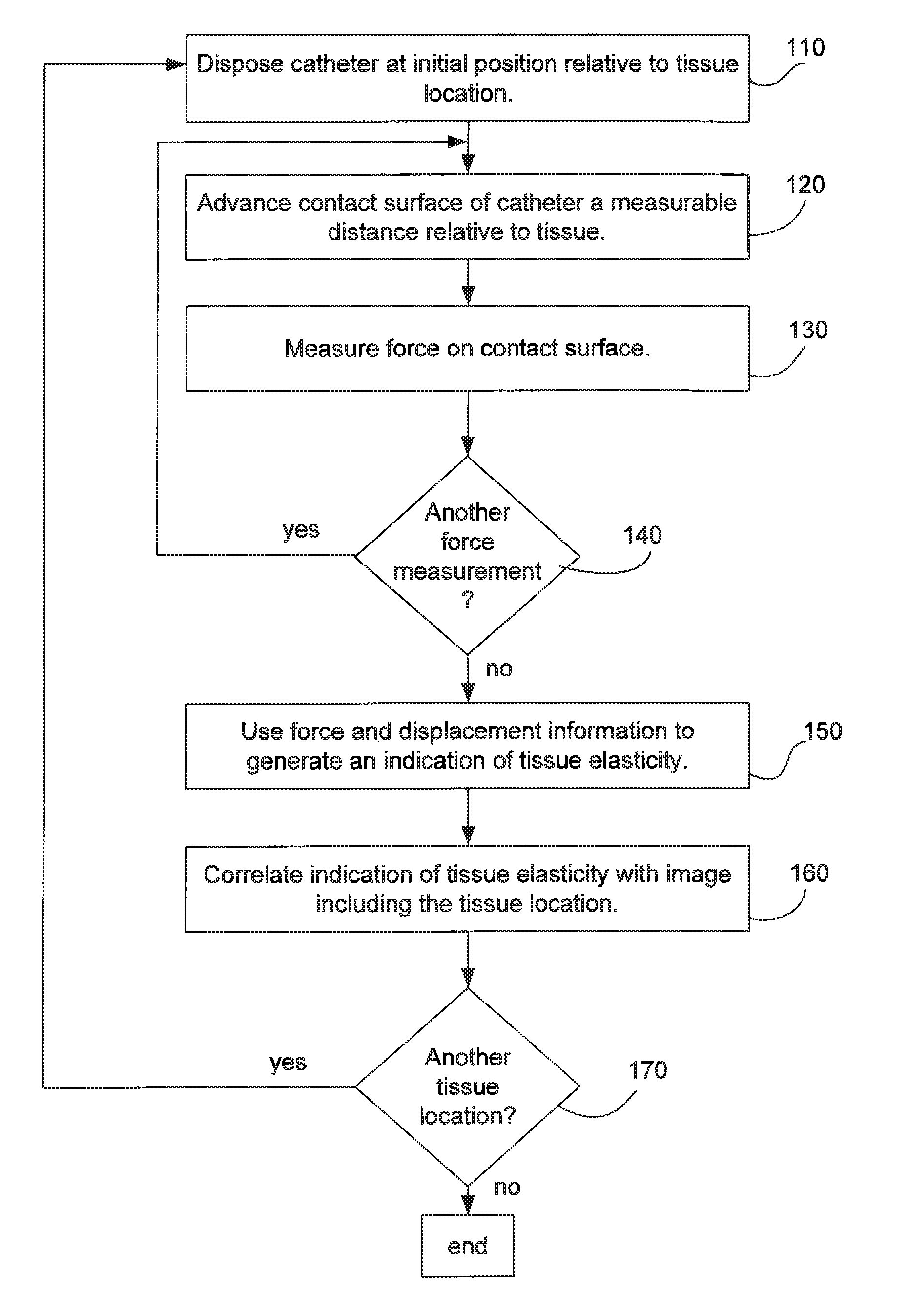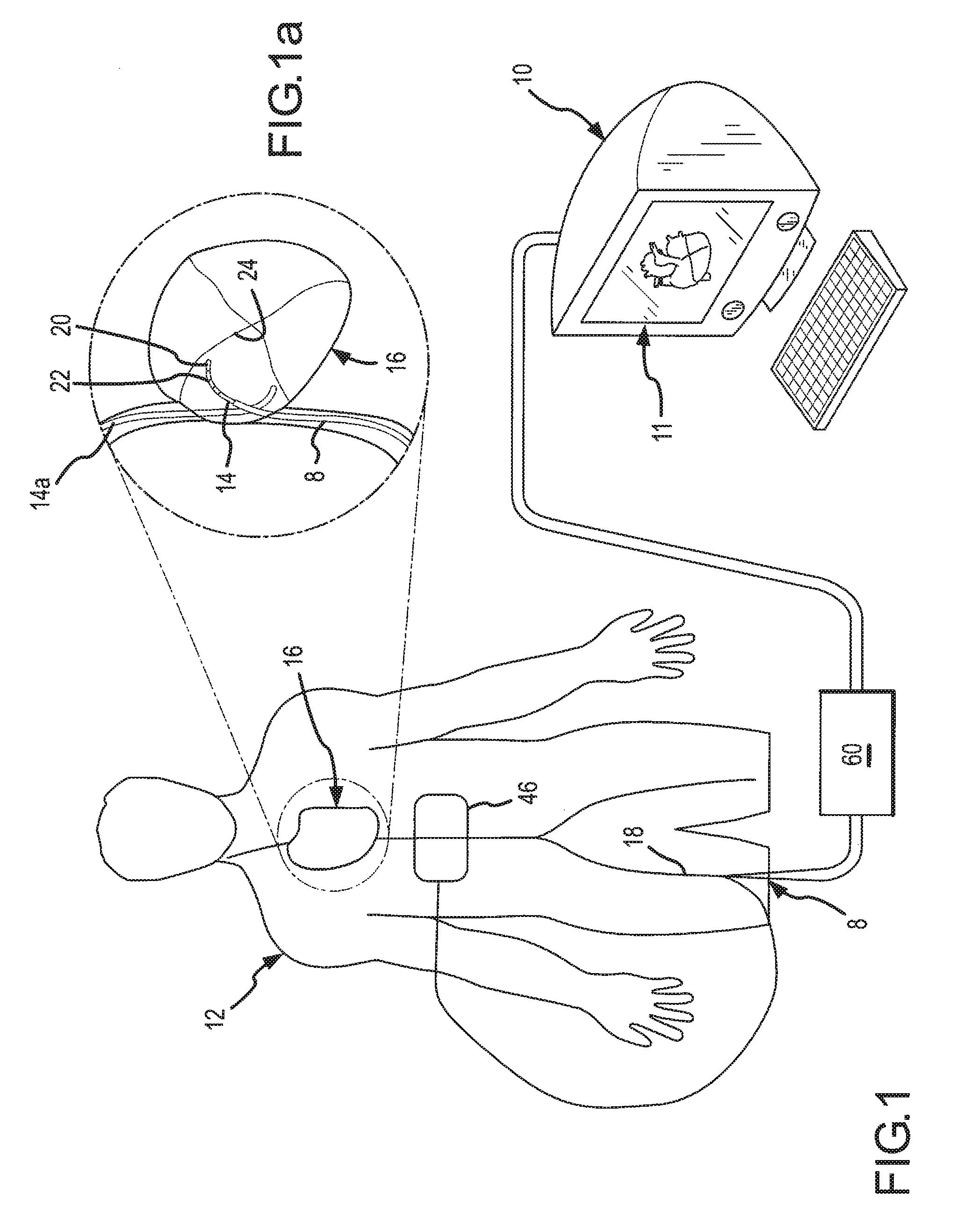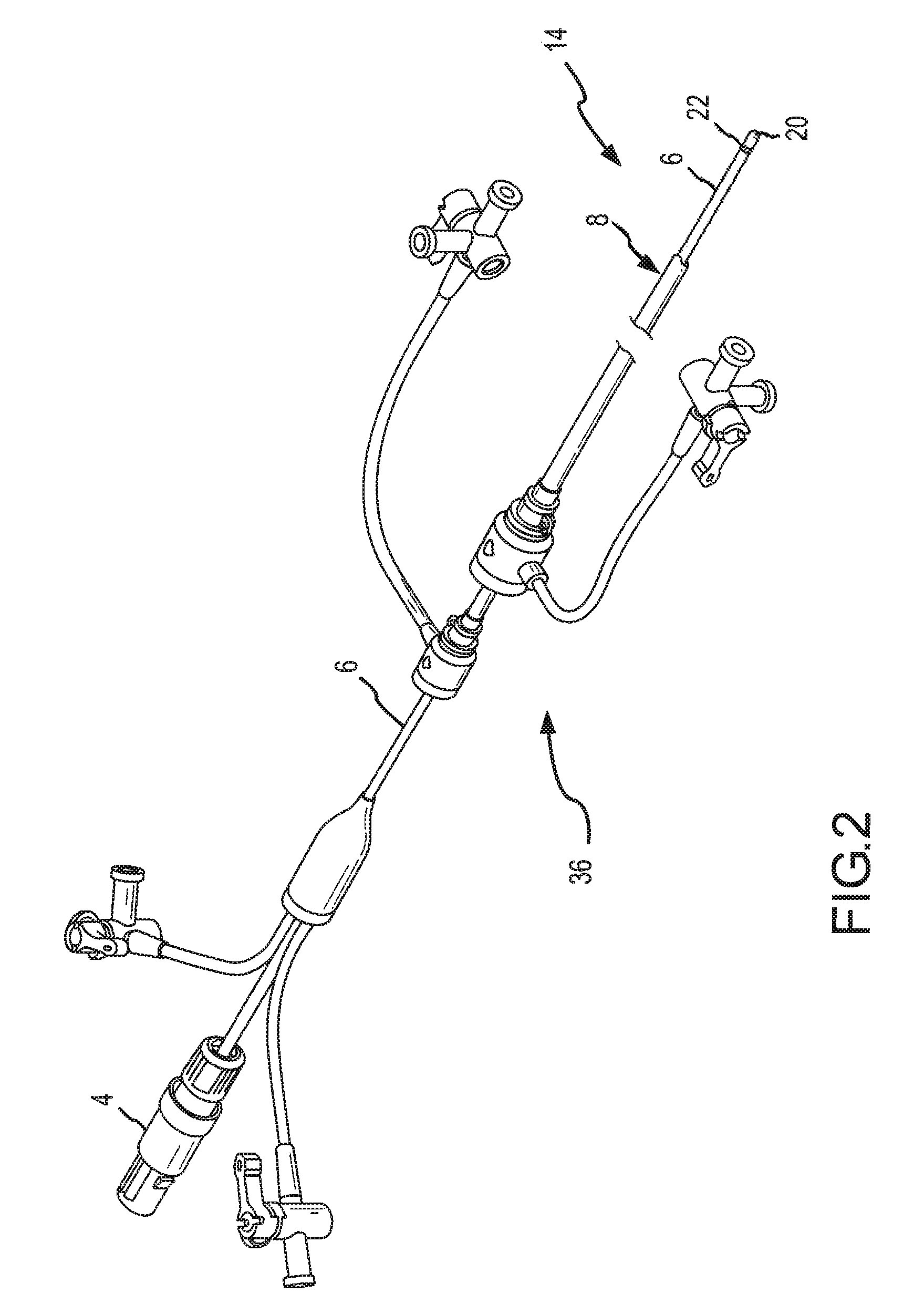Cardiac tissue elasticity sensing
a technology of elastic sensing and cardiac tissue, applied in the field of electro-catheter, can solve the problems of difficulty in obtaining access to specific areas of the heart, difficulty in precise positioning of the ablation catheter, and several difficulties
- Summary
- Abstract
- Description
- Claims
- Application Information
AI Technical Summary
Problems solved by technology
Method used
Image
Examples
Embodiment Construction
[0032]Exemplary embodiments of a catheter system and methods of using the system to measure tissue elasticity are depicted in the figures. As described further below, measuring tissue elasticity, as provided by the present invention, provides a number of advantages including, for example, the ability to locate a structure(s) of interest based on the elasticity of the structure and / or the elasticity of surrounding structure. Measuring tissue elasticity also allows for determining force applied to tissue, which may allow enhanced control of lesion dimensions.
[0033]FIG. 1 is a diagrammatic illustration of an exemplary electrode catheter system 10 which may be implemented to access and map internal patient tissue and / or perform medical procedures on such tissue. Further, the system 10 is operative to assess tissue elasticity to assist in tissue mapping, catheter guidance, ablation procedures and / or other procedures. The catheter system 10 may include a guiding introducer having a sheath...
PUM
 Login to View More
Login to View More Abstract
Description
Claims
Application Information
 Login to View More
Login to View More - R&D
- Intellectual Property
- Life Sciences
- Materials
- Tech Scout
- Unparalleled Data Quality
- Higher Quality Content
- 60% Fewer Hallucinations
Browse by: Latest US Patents, China's latest patents, Technical Efficacy Thesaurus, Application Domain, Technology Topic, Popular Technical Reports.
© 2025 PatSnap. All rights reserved.Legal|Privacy policy|Modern Slavery Act Transparency Statement|Sitemap|About US| Contact US: help@patsnap.com



